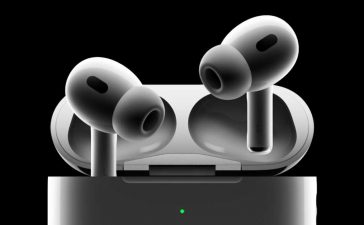Data has the potential to provide transformative business insights across various industries, yet harnessing that data presents significant challenges. Many businesses struggle with data overload, with vast amounts of data that are siloed and underutilized. How can organizations deal with large and growing volumes of data without sacrificing performance and operational efficiency? Another challenge is extracting insights from complex data. Traditionally, this work has required significant technical expertise, restricting access to specialized data scientists and analysts.
Recent AI breakthroughs in natural language processing are democratizing data access, enabling a wider range of users to query and interpret complex data sets. This broadened access helps organizations make informed decisions swiftly, capitalizing on the capability of AI copilots to process and analyze large-scale data in real time. AI copilots can also curb the high costs associated with managing large data sets by automating complex data processes and empowering less technical staff to undertake sophisticated data analysis, thus optimizing overall resource allocation.
Generative AI and large language models (LLMs) are not without their shortcomings, however. Most LLMs are built on general purpose, public knowledge. They won’t know the specific and sometimes confidential data of a particular organization. It’s also very challenging to keep LLMs up-to-date with ever-changing information. The most serious problem, however, is hallucinations—when the statistical processes in a generative model generate statements that simply aren’t true.
There’s an urgent need for AI that is more contextually relevant and less error-prone. This is particularly vital in predictive analytics and machine learning, where the quality of data can directly impact business outcomes.
Introducing TigerGraph CoPilot
TigerGraph CoPilot is an AI assistant that combines the powers of graph databases and generative AI to enhance productivity across various business functions, including analytics, development, and administration tasks. TigerGraph CoPilot allows business analysts, data scientists, and developers to use natural language to execute real-time queries against up-to-date data at scale. The insights can then be presented and analyzed through natural language, graph visualizations, and other perspectives.
TigerGraph CoPilot adds value to generative AI applications by increasing accuracy and reducing hallucinations. With CoPilot, organizations can tap the full potential of their data and drive informed decision-making across a spectrum of domains, including customer service, marketing, sales, data science, devops, and engineering.
TigerGraph CoPilot key features and benefits
- Graph-augmented natural language inquiry
- Graph-augmented generative AI
- Reliable and responsible AI
- High scalability and performance
Graph-augmented natural language inquiry
TigerGraph CoPilot allows non-technical users to use their everyday speech to query and analyze their data, freeing them to focus on mining insights rather than having to learn a new technology or computer language. For each question, CoPilot employs a novel three-phase interaction with both the TigerGraph database and a LLM of the user’s choice, to obtain accurate and relevant responses.
The first phase aligns the question with the particular data available in the database. TigerGraph CoPilot uses the LLM to compare the question with the graph’s schema and replace entities in the question by graph elements. For example, if there is a vertex type of BareMetalNode and the user asks “How many servers are there?,” then the question will be translated to “How many BareMetalNode vertices are there?”
In the second phase, TigerGraph CoPilot uses the LLM to compare the transformed question with a set of curated database queries and functions in order to select the best match. Using pre-approved queries provides multiple benefits. First and foremost, it reduces the likelihood of hallucinations, because the meaning and behavior of each query has been validated. Second, the system has the potential of predicting the execution resources needed to answer the question.
In the third phase, TigerGraph CoPilot executes the identified query and returns the result in natural language along with the reasoning behind the actions. CoPilot’s graph-augmented natural language inquiry provides strong guardrails, mitigating the risk of model hallucinations, clarifying the meaning of each query, and offering an understanding of the consequences.
 IDG
IDGGraph-augmented generative AI
TigerGraph CoPilot also can create chatbots with graph-augmented AI on a user’s own documents. There’s no need to have an existing graph database. In this mode of operation, TigerGraph CoPilot builds a knowledge graph from source material and applies its unique variant of retrieval-augmented generation (RAG) to improve the contextual relevance and accuracy of answers to natural language questions.
First, when loading users’ documents, TigerGraph CoPilot extracts entities and relationships from document chunks and constructs a knowledge graph from the documents. Knowledge graphs organize information in a structured format, connecting data points through relationships. CoPilot will also identify concepts and build an ontology, adding semantics and reasoning to the knowledge graph, or users can provide their own concept ontology. Then, using this comprehensive knowledge graph, CoPilot performs hybrid retrievals, combining traditional vector search and graph traversals, to collect more relevant information and richer context to answer users’ questions.
Organizing the data as a knowledge graph allows a chatbot to access accurate, fact-based information quickly and efficiently, thereby reducing the reliance on generating responses from patterns learned during training, which can sometimes be incorrect or outdated.
 IDG
IDGReliable and responsible AI
TigerGraph CoPilot mitigates hallucinations by allowing LLMs to access the graph database via curated queries. It also adheres to the same role-based access control and security measures (already part of the TigerGraph database) to assure responsible AI. TigerGraph CoPilot also supports openness and transparency by open-sourcing its major components and allowing users to choose their LLM service.
High scalability and performance
By leveraging the TigerGraph database, TigerGraph CoPilot brings high performance to graph analytics. As a graph-RAG solution, it supports large-scale knowledge bases for knowledge graph-powered Q&A solutions.
TigerGraph CoPilot key use cases
- Natural language to data insights
- Context-rich Q&A
Natural language to data insights
Whether you are a business analyst, specialist, or investigator, TigerGraph CoPilot enables you to get information and insights quickly from your data. For example, CoPilot can generate reports for fraud investigators by answering questions like “Show me the list of recent fraud cases that were false positives.” CoPilot also facilitates more accurate investigations like “Who had transactions with account 123 in the past month with amounts larger than $1000?”
TigerGraph CoPilot can even answer “What if” questions by traversing your graph along dependencies. For example, you can easily find out “What suppliers can cover the shortage of part 123?” from your supply chain graph, or “What services would be affected by an upgrade to server 321” from your digital infrastructure graph.
Context-rich Q&A
TigerGraph CoPilot provides a complete solution for building Q&A chatbot on your own data and documents. Its knowledge graph-based RAG approach enables contextually accurate information retrieval that facilitates better answers and more informed decisions. CoPilot’s context-rich Q&A directly improves productivity and reduces costs in typical Q&A applications such as call centers, customer services, and knowledge search.
Furthermore, by merging a document knowledge graph and an existing business graph (e.g., product graph) into one intelligence graph, TigerGraph CoPilot can tackle problems that cannot be addressed by other RAG solutions. For example, by combining customers’ purchase history with product graphs, CoPilot can make more accurate personalized recommendations when customers type in their search queries or ask for recommendations. By combining patients’ medical history with healthcare graphs, doctors or health specialists can get more useful information about the patients to provide better diagnoses or treatments.
Graph meets generative AI
TigerGraph CoPilot addresses both the complex challenges associated with data management and analysis and the serious shortcomings of LLMs for business applications. By leveraging the power of natural language processing and advanced algorithms, organizations can unlock transformative business insights while navigating data overload and accessibility barriers. By tapping graph-based RAG, they can ensure the accuracy and relevance of LLM output.
CoPilot allows a wider range of users to leverage data effectively, driving informed decision-making and optimizing resource allocation across organizations. We believe it is a significant step forward in democratizing data access and empowering organizations to harness the full potential of their data assets.
Hamid Azzawe is CEO of TigerGraph.
—
Generative AI Insights provides a venue for technology leaders—including vendors and other outside contributors—to explore and discuss the challenges and opportunities of generative artificial intelligence. The selection is wide-ranging, from technology deep dives to case studies to expert opinion, but also subjective, based on our judgment of which topics and treatments will best serve InfoWorld’s technically sophisticated audience. InfoWorld does not accept marketing collateral for publication and reserves the right to edit all contributed content. Contact doug_dineley@foundryco.com.
Copyright © 2024 IDG Communications, Inc.












